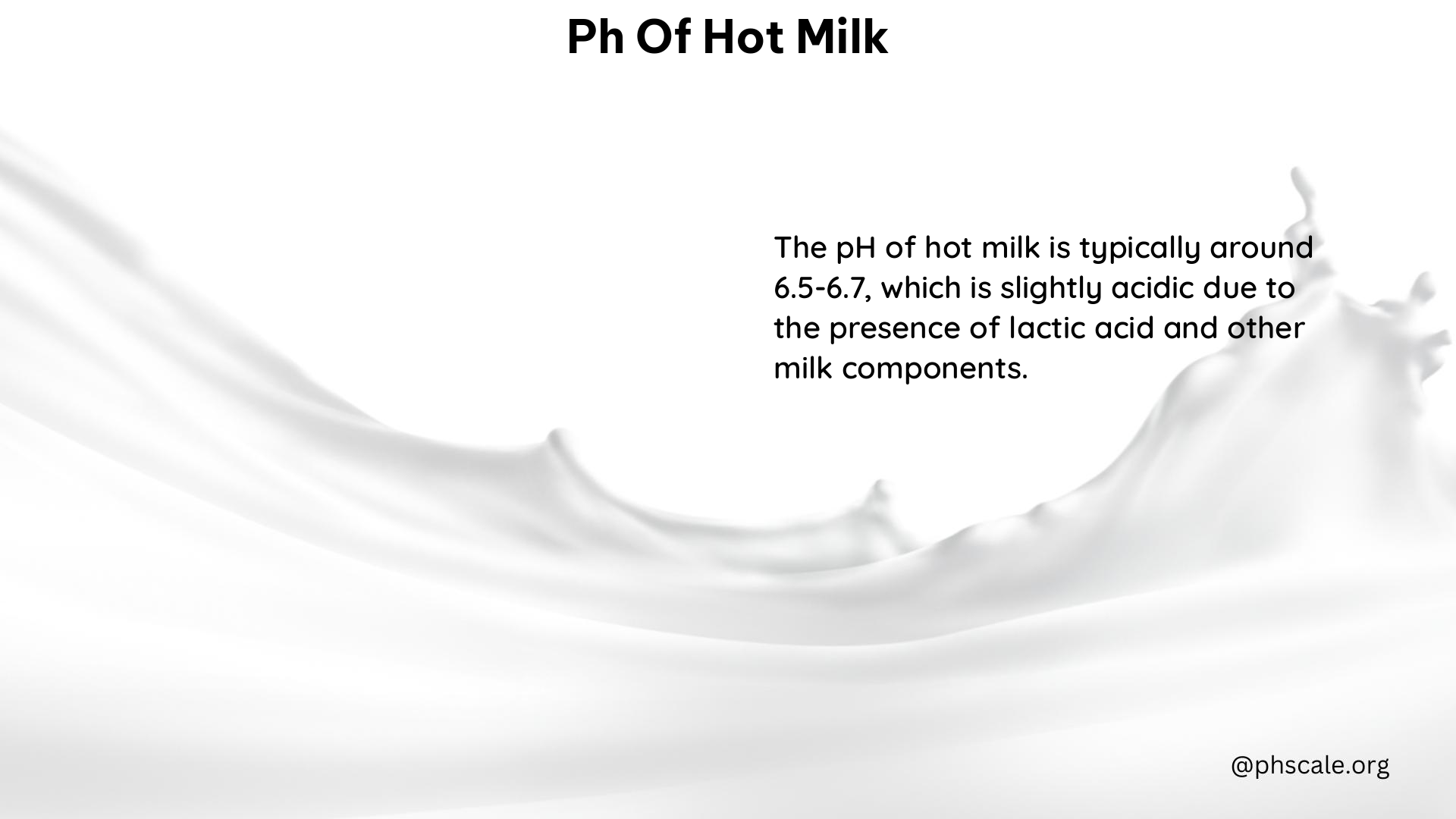The pH of hot milk is a crucial factor to consider, as it can impact the overall health and well-being of individuals. Typically, the pH of hot milk ranges from 6.5 to 6.9, indicating a slightly acidic nature. This article delves into the intricacies of the pH of hot milk, exploring its range, the importance of maintaining a balanced pH, and the potential contaminants and chemicals that can affect it.
pH Range of Hot Milk
The pH of hot milk can vary depending on the type of milk and the processing methods used. Here’s a breakdown of the typical pH ranges:
| Milk Type | pH Range |
|---|---|
| Pasteurized Milk | 6.7 to 6.9 |
| Fresh Milk | 6.5 to 6.7 |
| UHT (Ultra-High Temperature) Milk | 6.5 to 6.58 |
It’s important to note that the pH of milk can change over time, becoming more acidic as it goes sour. This is a natural process that occurs as the milk ferments and lactic acid is produced.
Balancing pH Levels

Maintaining a balanced pH level in the body is crucial for overall health. Milk, being an acid-forming food, can contribute to the overall acidity of the body. To counteract this, it’s essential to consume a balanced diet that includes both acid-forming and alkaline-forming foods.
Acid-forming foods include dairy, meat, poultry, fish, and most grains, while alkaline-forming foods include fruits and vegetables. By consuming a variety of these foods, individuals can help maintain a healthy pH level in the body.
Contaminants and Chemicals
The pH of hot milk can be affected by various contaminants and chemicals. Here are some key factors to consider:
Acidity
As milk goes sour, it becomes more acidic, which can be a sign of spoilage. This increased acidity can be detected through pH testing and is an important indicator of milk quality.
Heat-induced Acidity
Heating milk can also increase its acidity, although the extent of this change depends on the initial pH and the heating process. Prolonged or excessive heating can lead to a more acidic pH in hot milk.
Home Remedies and Alternatives
If you’re looking to balance your pH levels, there are some home remedies and alternatives to consider:
Alkaline-forming Plant-based Milks
Options like almond milk and soy milk can be a great alternative to dairy milk, as they are typically more alkaline-forming and can help balance the body’s pH levels.
pH Testing
Using pH or litmus paper to test your body’s acidity can be a helpful tool in adjusting your diet and maintaining a balanced pH.
Helpful Tips
To maintain a healthy pH level and ensure the quality of your hot milk, consider the following tips:
- Consume a balanced diet: Include both acid-forming and alkaline-forming foods to maintain a healthy pH level.
- Monitor pH levels: Regularly test your body’s acidity to adjust your diet and maintain a balanced pH.
- Choose healthy acid-forming foods: Opt for fish, whole grains, lean meats, and dairy products that are rich in nutrients.
By understanding the pH of hot milk and implementing these strategies, you can ensure that you’re consuming a healthy and balanced diet that supports your overall well-being.
References
- https://www.healthline.com/health/ph-of-milk
- https://www.thoughtco.com/what-is-the-ph-of-milk-603652
- https://www.quora.com/Is-it-true-that-cold-milk-is-basic-and-hot-milk-is-acidic-in-nature
- https://www.sciencedirect.com/science/article/pii/S0022030227938247/pdf?md5=49bea0ca8d8a973b97315c27009b5dd7&pid=1-s2.0-S0022030227938247-main.pdf
- https://www.sigmaaldrich.com/US/en/technical-documents/protocol/analytical-chemistry/photometry-and-reflectometry/ph-of-milk-and-milk-products
